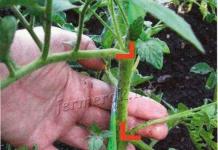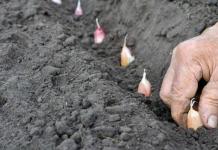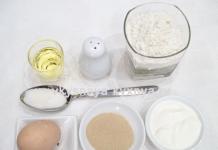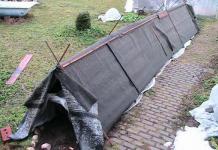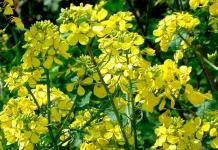Medvedka is a rather unpleasant creature, in the sense that she does not look very attractive, and yes, it also seriously harms the gardeners. Often it gnaws at the roots of cultivated plants we have planted, destroys their seeds and seriously spoils the roots of the same radish, potato or carrot. And this is, oh, how not all that she is capable of. It is because of all these far from petty "dirty tricks" that summer residents have forever brought it to the "Honor Board" of the most dangerous pests. So, in the summer, we constantly return to the question of how to get rid of it. If you decide to read this article, then the bear has gotten you too.
Fighting a bear in a vegetable garden or garden plot. We use folk remedies
What a bear looks like, and what kind of insect it is, you can find out We will not talk about it. In addition, there is another very short article that lists several methods on how to get rid of it. The same article will be a little larger in volume, and in it we will list folk remedies that, I really hope, will still help you get rid of the bear. Chemistry, of course, can also be used. But, such chemistry, a very dangerous thing, both for ourselves and for nature, and the beneficial creatures that inhabit it. But folk remedies are completely safe. Of course, they do not act as quickly as chemical preparations, but with their regular use, you can also get rid of the bear. But you will not poison the earth with chemistry.
The method, perhaps, can be safely attributed to one of the simplest. Such a solution is simply poured into the place where the bear made the entrance to her dungeon. You need to fill in a liter or two solutions. From such a "soapy flood" the bear will quickly jump out. Here, you just need to catch it (so, "do not sleep"), what you will do with it further, this is your business.
As for the soap solution itself, many say that any soap can be used, and even washing powder But, nevertheless, it is better not to use powder. It contains a lot of various "nasty things" (bleaches, phosphates, etc.), which are, of course, needed for linen, but it is better not to let them into the soil. Better still, limit yourself to soap, and even better, household soap. You can do without soap at all, because a bear is not a beaver, and she does not like water. So it will jump out of the hole and from plain water.
As for the minks of the bear and where to look for it, find plants on the site that wither. Most likely, it was the bear that spoiled their roots. She does this on purpose so that with her leaves the plant does not create a shadow that blocks the laying of eggs from the sun. All these signs will indicate to you a well-rammed bear mink. Such a mink is usually a dense lump of soil, it is in it that a clutch of eggs can be located, and this is up to 200 hundred pieces!
Next, let's talk about the different types of traps that you can use to catch the bear. Why are they convenient, that they are placed once, and then, your participation in the fight against the bear is not required. They themselves will catch this pest, and you have a rest, although there are never any problems with work in the garden.
Glass jar trap
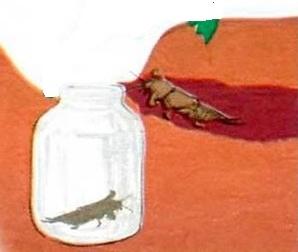 As you know, Medvedka is a good "metro builder"; she digs underground tunnels very well. It is along them that she then moves. What will we need to do? We take a simple can, small, half liter or 700 gram. And we dig in such a jar on the path near the bear, with the neck up. When the bear once again goes through her dungeon, she will simply fall into it. She won't be able to get out of the can.
As you know, Medvedka is a good "metro builder"; she digs underground tunnels very well. It is along them that she then moves. What will we need to do? We take a simple can, small, half liter or 700 gram. And we dig in such a jar on the path near the bear, with the neck up. When the bear once again goes through her dungeon, she will simply fall into it. She won't be able to get out of the can.
Sweet honey trap
Here, too, you will need a glass jar, or you can use a plastic bottle, which is simply cut off (cut off its narrow part). Cover the inner walls of a jar or bottle with honey. In height, honey will need to be applied to about ¼-th part. Next, we bury our trap in the ground. We cover it loosely with something so that the earth does not fall asleep there (a piece of plywood, for example, is suitable for this), and on top of the shelter, we also pour straw. The smell of honey will attract a bear, and a lot of it can collect in the straw.
Beer trap for a bear
We open a 0.5 liter bottle of beer, pour out (or drink) more than half of the contents, leave about 100 grams. Next, we dig a small hole, and we dig our bottle with the remnants of beer into this hole. You need to dig in at an angle, with the neck up. In this case, the very neck of the bottle should not touch the soil. We water the very soil in this hole a little, and cover it with something. A sheet of slate, a tin or good, thick cardboard will do. On such a "beer bait", you can also catch a lot of bears. A week or 10 days will pass, we dig out the bottle together with the bears, which by that time will fall into it, and we equip such a trap in another place. Such beer traps can be placed one by one, on 4 or 5 square meters of your site.

Dung trap
How does it work? For wintering, the bear picks up a warm and loose soil. Manure is just such a place. So, it's time to make such traps in the fall. To do this, you will need to dig holes 2 or 3 for the entire area. Their depth should be up to 50 centimeters. Next, fill these pits with manure (already well-rotted), which will also need to be mixed with straw. By winter, a bear will begin to gather in such a warm hole, preparing to "rest" until spring. When frosts come, then this hole will need to be destroyed. So the bear, and with it its larvae, will freeze in the frost, and your site will become much less populated by this pest.
Fighting a bear with eggshells
The eggshells will need to be dried, then grind them well, and add sunflower oil with a smell, that is, unrefined, there. Put such a shell with a smell in the holes or grooves where you will plant seeds or seedlings. As they say, the bear loves such a delicacy, but it becomes fatal for her. The same shells that remain in the garden will simply fertilize the soil. So, this recipe is not only effective in fighting the bear, but also useful for the soil.
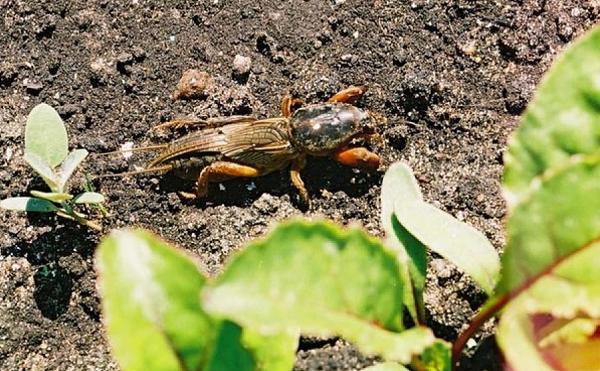
What does the bear dislike, and how to use it to deal with it?
The needles, or rather its smell, is the first thing that the bear simply cannot stand. So, stock up on a needle case, scatter it over the area, and then dig it up.
I do not like the bear and marigolds, they can simply be planted between the rows of your beds. The bear doesn't like chrysanthemums either. Autumn will come, remember the chrysanthemums, when they fade, just cut off their stems. Next, we tie these stems to make small bunches, and let them dry. Spring will come, chop dry stems and also lay them in the soil.
You can destroy the bear and her eggs by simply loosening the soil. This should be done deeply, up to 12 centimeters deep.
The bear doesn't like aspen either. We prepare aspen stakes (just like against vampires!) 25 or 30 centimeters. The thickness of such pegs should be 2-4 centimeters. We must leave the bark on pegs. You can not bother with stakes, but just use aspen branches of the same thickness. Such pegs are simply stuck into the ground for their entire length, after a meter or two. So you can scare off the bear.
You can build wind turbines. They can be made from plastic pipes. At the end of such a pipe, just a propeller is placed, which will rotate from the wind. The noise from the work of such a turntable will scare the bear away.
You can put pieces of old boards on it in the spring, when the ground has already thawed, plywood or something similar is also suitable. Under them, the bear will certainly crawl to warm up. Then this "shelter" is raised, and the bear is thrown into a prepared bucket of water, where kerosene is also added. The same can be done in the summer.
How to catch a bear?
You can catch a bear, but not catch her even in the most cunning traps, if you do not know what she loves.
As for the manure trap, it is better to fill it with horse manure. But, quite often the bear comes to us "on a visit" along with pork or cow dung. If she successfully lives in it, then it is also quite suitable for such traps. You can also enhance the attractiveness of dung traps by simply adding in the same beer or sunflower oil.
You can make manure traps in the spring. To do this, you do not need to dig a hole; manure is simply poured in small heaps on the site, in its different places. Such heaps are very attractive to the bear, where she lays her eggs. It will take 25 or 30 days, such heaps are looked through, and they destroy both the bear and her offspring, if you are lucky with the "hunt".
How to protect plants from a bear?
Traps, of course, are good, but still, plants need to be protected from the bear. There are plenty of methods here too.
We take any piece of old natural fabric and cut it into small pieces, about 20 by 10 centimeters. Next, we soak these pieces in water, and wrap them on the stems of the seedlings from below. For some reason, the bear does not like such protected seedlings, she does not approach her. As for the fabric, it will simply rot itself. You can replace this fabric with pieces of irrigation hose. It is cut to 8-10 centimeters, then cut also lengthwise, and then also put on the stems of the seedlings. A piece of hose from below you will have to abut almost against the roots, and from above they should only peep out of the soil about 3 centimeters.
There are gardeners who generally cover all the roots of the plant as a whole, and not just its trunk. To do this, select cans from a tin that are suitable for the plant in size. The butt in such jars is simply cut out.
You can simply sprinkle the egg shells (you will need to crush them) around the plants. This works well when planting seedlings.
You can plant soybeans next to the beds. The bear does not touch such beds either. Soy scares her off somehow. Also, if there are toads on your site, then this is very good. They love to feast on a bear, but if there are no toads, then you need to attract them.
Fighting the bear with the help of "chemistry"
Since this method exists, you still need to talk about it so that you know how to use various drugs.
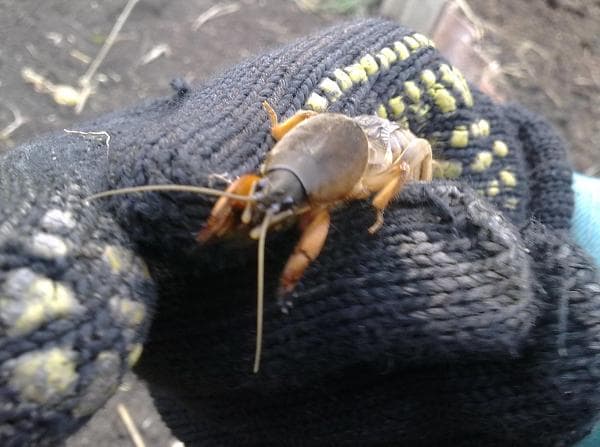
You can use the suspension "Aktara 25WG". The roots of the seedlings are moistened with it before you plant it. The suspension will need to be diluted. Only one and a half grams of "Aktara" per liter of water will be enough for you to process as many as 250 seedlings. In this case, the temperature should be 18-23 degrees, and in time the drug acts from 90 minutes to 120 minutes. It is suitable for cabbage, eggplant, as well as tomatoes and bell peppers.
There is a drug "Medvedtox-U" (about 300 grams per one hundred square meters), which will protect your potatoes. It is also suitable for cabbage and tomatoes. Here, nothing needs to be bred, it is poured directly into the furrows (in depth, 3-4 centimeters). You can also sprinkle it between the beds. The option of its use is also suitable along the perimeter. After sprinkling, the preparations, the grooves are simply sprinkled with soil, and then watered when seedlings are planted or tubers are planted. You will need to pour out a bucket (i.e. 10 liters) per square meter of water.
You can use another type of suspension, this is "Prestige 290 FS". Its consumption is small, only 100 ml of such "prestige" per 10 liters of water. Plants are soaked in it for 6 or even 8 hours.
There is "Phenoxine" in granules. It smells "good" for a bear, so she is strongly attracted to the granules of such a drug, and they are poisonous.
The drug "Kapkan" is used in traps. They are dug in the manure, where the bears build their nests. This drug is poured into these traps. But, pets must be protected from him so that he does not lie on the surface. You can also use it right in the garden. We also dig shallow grooves (3-5 centimeters), and put granules in them. They are not covered with a solid line, but put in about 20-30 centimeters. Again, do not forget to sprinkle them with earth. They are not harmful to the soil. Some time will pass, and these granules simply dissolve from moisture. If there are a lot of bears and it appears in these places all the time, then the laying of such granules will need to be repeated again, two weeks later, when the “youth” of the bear grows up.
As you can see, there is a remedy for the bear, and far from one. What to use is up to you. Try it and find the most effective method of dealing with a bear exactly on your site. And here is another, very good video, where they will tell you how you can get rid of the bear. We look.






